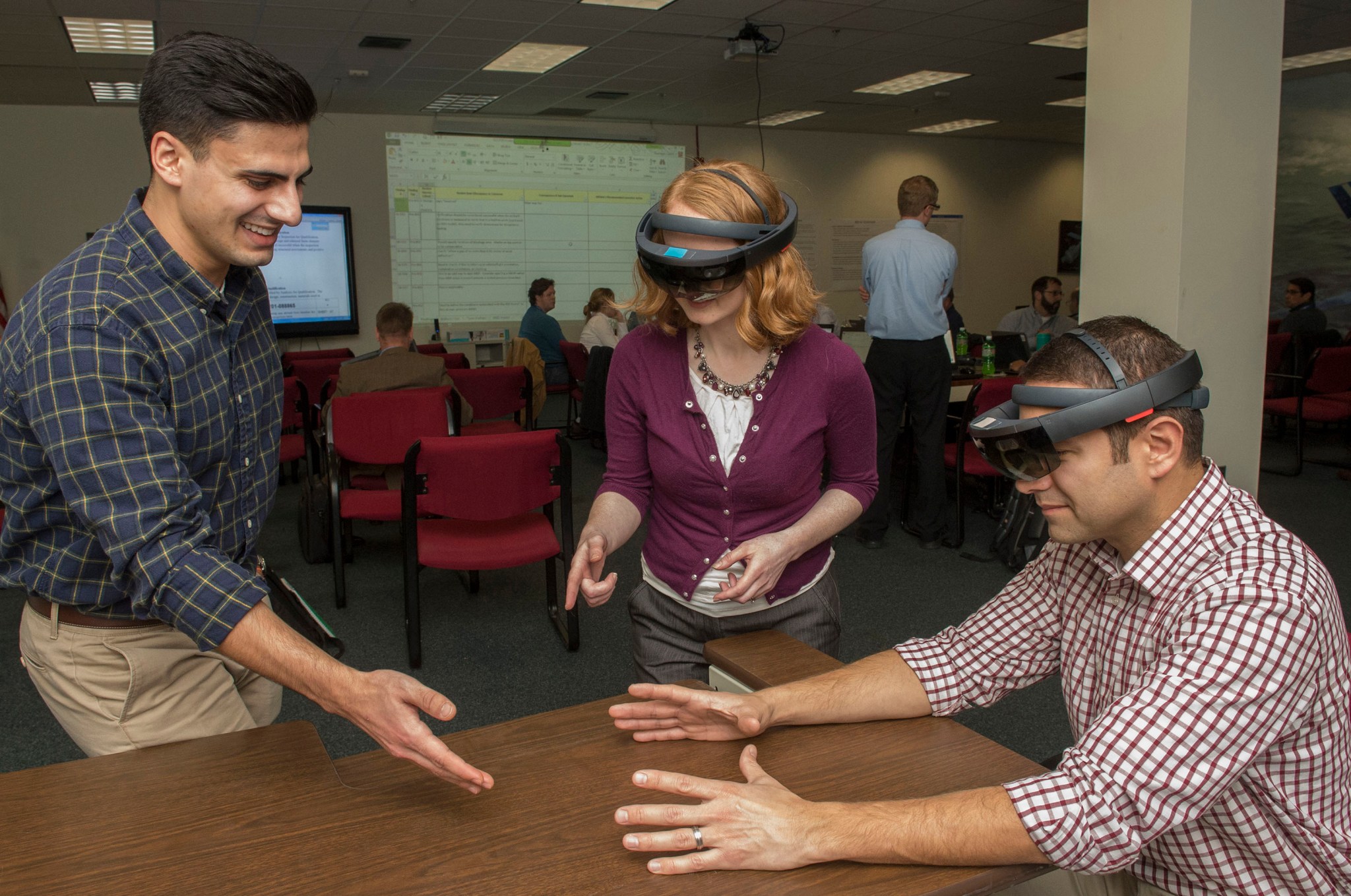In This Week’s Star
- Major Review Completed for NASA’s New SLS Exploration Upper Stage
- NOAA’s GOES-16 Satellite Sends First Images to Earth
- Day of Remembrance: Marshall Team Honors NASA’s Space Heroes
- NASA Shares ‘Journey To Mars’ Experience During 2017 Super Bowl
- U.S. Army Honors Marshall Metrology and Calibration Laboratory Team
- This Week in NASA History: First Saturn I Block II Rocket Launches — Jan. 29, 1964
- Obituaries
Major Review Completed for NASA’s New SLS Exploration Upper Stage
By Megan Davidson
NASA has successfully completed the exploration upper stage preliminary design review for the powerful Space Launch System rocket. The detailed assessment is a big step forward in being ready for more capable human and robotic missions to deep space, including the first crewed flight of SLS and NASA’s Orion spacecraft in 2021.
“To send humans and even more cargo farther away from Earth than ever before, NASA decided to add a more powerful upper stage — the upper part of the rocket that continues to operate after launch and ascent,” said Kent Chojnacki, EUS team lead and preliminary design review manager at NASA’s Marshall Space Flight Center.
“With the completion of this review, our teams will start developing components and materials for the EUS, and build up tooling,” he added. “Full-scale manufacturing will begin after the critical design phase is completed.” Critical design review is the next programmatic milestone that will provide a final look at the design and development of the EUS before beginning full-scale fabrication.
Starting with that first crewed mission, future configurations of SLS will include the larger exploration upper stage and use four RL10C-3 engines. The EUS will replace the interim cryogenic propulsion stage that will be used on the initial configuration of SLS for the first, uncrewed flight with Orion. The EUS will use an 8.4-meter-diameter liquid hydrogen tank and a 5.5-meter-diameter liquid oxygen tank. A new universal stage adapter will connect the EUS to the Orion spacecraft, and be capable of carrying large co-manifested payloads, such as a habitat.
The preliminary design review kicked off Nov. 30, 2016, with approximately 500 experts from across NASA and industry assessing more than 320 items on the EUS, including documents and data. This review had a new “techie” touch to it with the incorporation of virtual reality glasses, which gave teams enhanced visuals of how the EUS is put together and a broader perspective on the size of the hardware. The preliminary design review board was completed Jan. 19, with the board voting unanimously that the EUS is ready to move to the critical design phase.
“I couldn’t be prouder of the SLS Stages team completing this review,” said SLS Program Manager John Honeycutt. “We continue to make progress on hardware for SLS’s first flight, while also working on the next-generation rocket that will take astronauts to deep-space destinations, like Mars.”
The powerful stage will be built at NASA’s Michoud Assembly Facility. Massive welding machines, like the Vertical Assembly Center, currently building the SLS core stage, also will help build the EUS liquid hydrogen tank. New tooling and assembly areas will be put in place to manufacture the liquid oxygen tank.
Once built, the EUS structural test article will undergo qualification testing at Marshall to ensure the hardware can withstand the incredible stresses of launch. “Green run” testing on the first flight article will be done at NASA’s Stennis Space Center. For the test, the EUS and RL10 engines will fire up together for the first time before being sent to NASA’s Kennedy Space Center for the 2021 launch.
Davidson, an ASRC Federal/Analytical Services employee, supports the Office of Strategic Analysis & Communications.
NOAA’s GOES-16 Satellite Sends First Images to Earth
GOES-16, the first spacecraft in the National Oceanic and Atmospheric Administration’s next-generation of geostationary satellites, has sent the first high-resolution images from its Advanced Baseline Imager instrument. Included among them are a composite color full-disk visible image of the Western Hemisphere captured on Jan. 15. Created using several of the ABI’s 16 spectral channels, the full-disk image offers an example the satellite’s advanced technology.
The ABI can provide a full disk image of Earth every 15 minutes, one of the continental United States every five minutes, and has the ability to target regional areas where severe weather, hurricanes, wildfires, volcanic eruptions or other high-impact environmental phenomena are occurring as often as every 30 seconds. The ABI covers Earth five-times faster than the current generation GOES imagers and has four times greater spatial resolution, allowing meteorologists to see smaller features of Earth’s atmosphere and weather systems.
“Seeing these first images from GOES-16 is a foundational moment for the team of scientists and engineers who worked to bring the satellite to launch and are now poised to explore new weather forecasting possibilities with this data and imagery,” said Stephen Volz, NOAA’s assistant administrator for Satellite and Information Services in Silver Spring, Maryland. “The incredibly sharp images are everything we hoped for based on our tests before launch. We look forward to exploiting these new images, along with our partners in the meteorology community, to make the most of this fantastic new satellite.”
Along with the full-disk image of the Western Hemisphere, GOES-16 also captured:
• An image of the continental United States showing the significant storm system that crossed North America on Jan. 15.
• A 16-panel image showing the continental United States in the two visible, four near-infrared and 10 infrared channels on ABI.
• An image showing dust blowing off the coast of Africa.
• An image of the Caribbean and Florida that shows some of the shallows waters in the region.
• A view of Argentina in which mountain wave clouds can be seen in the southwestern part of the country.

NASA successfully launched GOES-R at 5:42 p.m. Nov. 19, 2016, from Cape Canaveral Air Force Station and the spacecraft was renamed GOES-16 when it achieved orbit. GOES-16 is now observing the planet from an equatorial view approximately 22,300 miles above the surface of Earth.
The Short-term Prediction Research and Transition Center at NASA’s Marshall Space Flight Center has worked closely with NOAA since 2009. Marshall team members have helped prepare the forecast and warning community for ABI’s remote sensing and for new lightning products from GOES-16’s next-generation Geostationary Lightning Mapper, which is based on Marshall’s Lightning Imaging Sensor.
In December, Marshall installed a high-performance ground station to receive meteorological and space weather data from instruments flown on the GOES series of satellites. Marshall Earth scientists this spring will participate in an airborne field campaign to calibrate instruments on GOES-16 and validate their data.
NOAA’s satellites are the backbone of its life-saving weather forecasts. GOES-16 will build upon and extend the more than 40-year legacy of satellite observations from NOAA that the American public has come to rely upon.
NOAA manages the GOES-R Series Program through an integrated NOAA-NASA office. NASA’s Goddard Space Flight Center oversees the acquisition of the GOES-R series spacecraft and instruments.
For more information, or to see a gallery of GOES-16’s first images, click here.
Day of Remembrance: Marshall Team Honors NASA’s Space Heroes
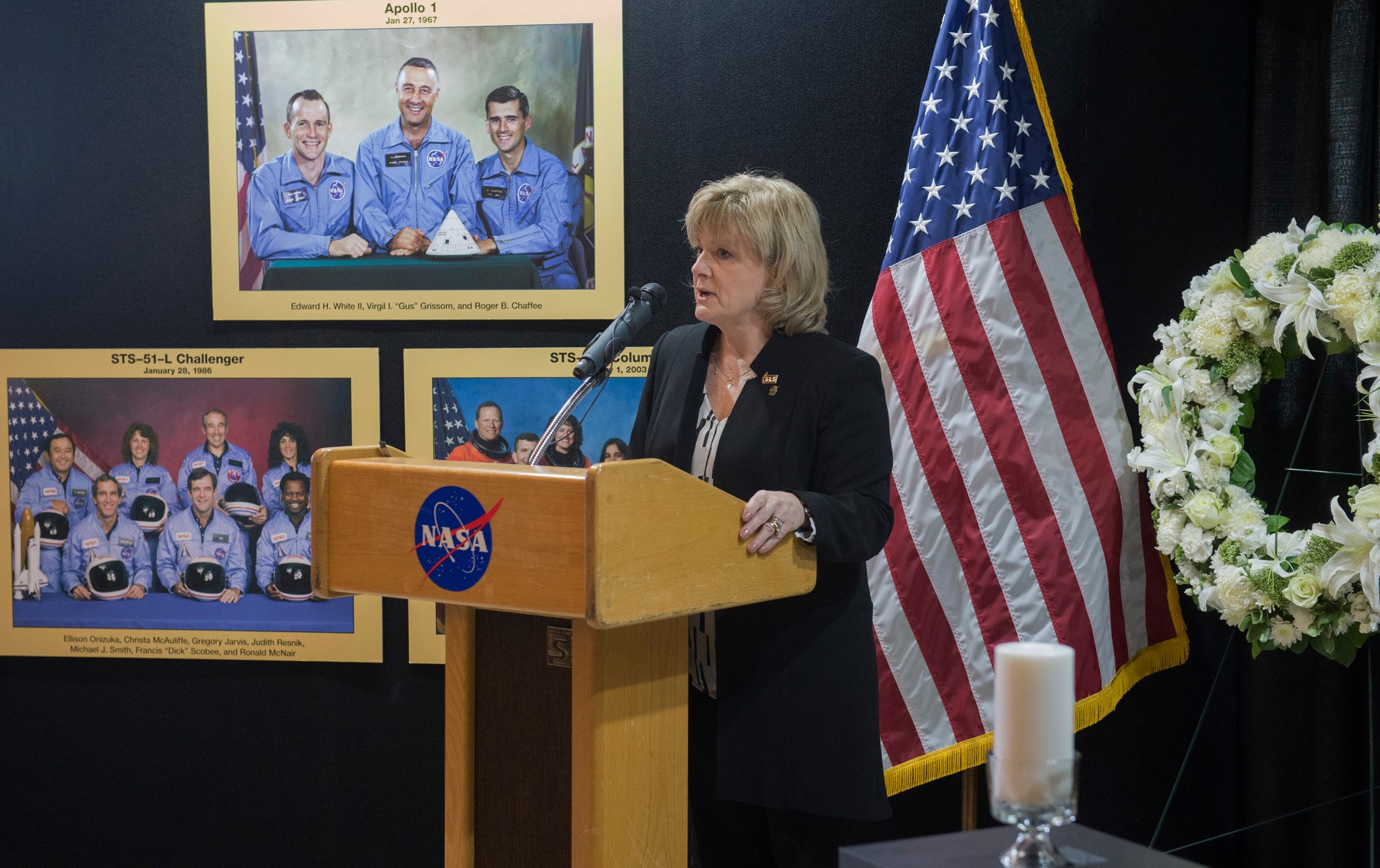
Jody Singer, deputy director of NASA’s Marshall Space Flight Center, addresses Marshall team members during NASA’s Day of Remembrance Jan. 31, honoring the crews of the Apollo 1 lunar mission and space shuttles Challenger and Columbia, who gave their lives in pursuit of the nation’s space exploration mission. “Their passion for discovery has inspired us all, and their stories will continue to inspire for generations to come,” Singer said during the event in the lobby of Building 4200, which included a commemorative candle-lighting. Also speaking during the Marshall event were Rick Burt, director of Marshall’s Safety and Mission Assurance Directorate, and former NASA astronaut Robert “Hoot” Gibson, a five-time space shuttle veteran who joined Singer later that morning for a public ceremony at the U.S. Space & Rocket Center. NASA also released a video honoring its lost explorers and held remembrance ceremonies at field centers nationwide and a wreath-laying at Arlington National Cemetery in Virginia by NASA Acting Administrator Robert Lightfoot and other senior agency officials. (NASA/MSFC/Emmett Given)
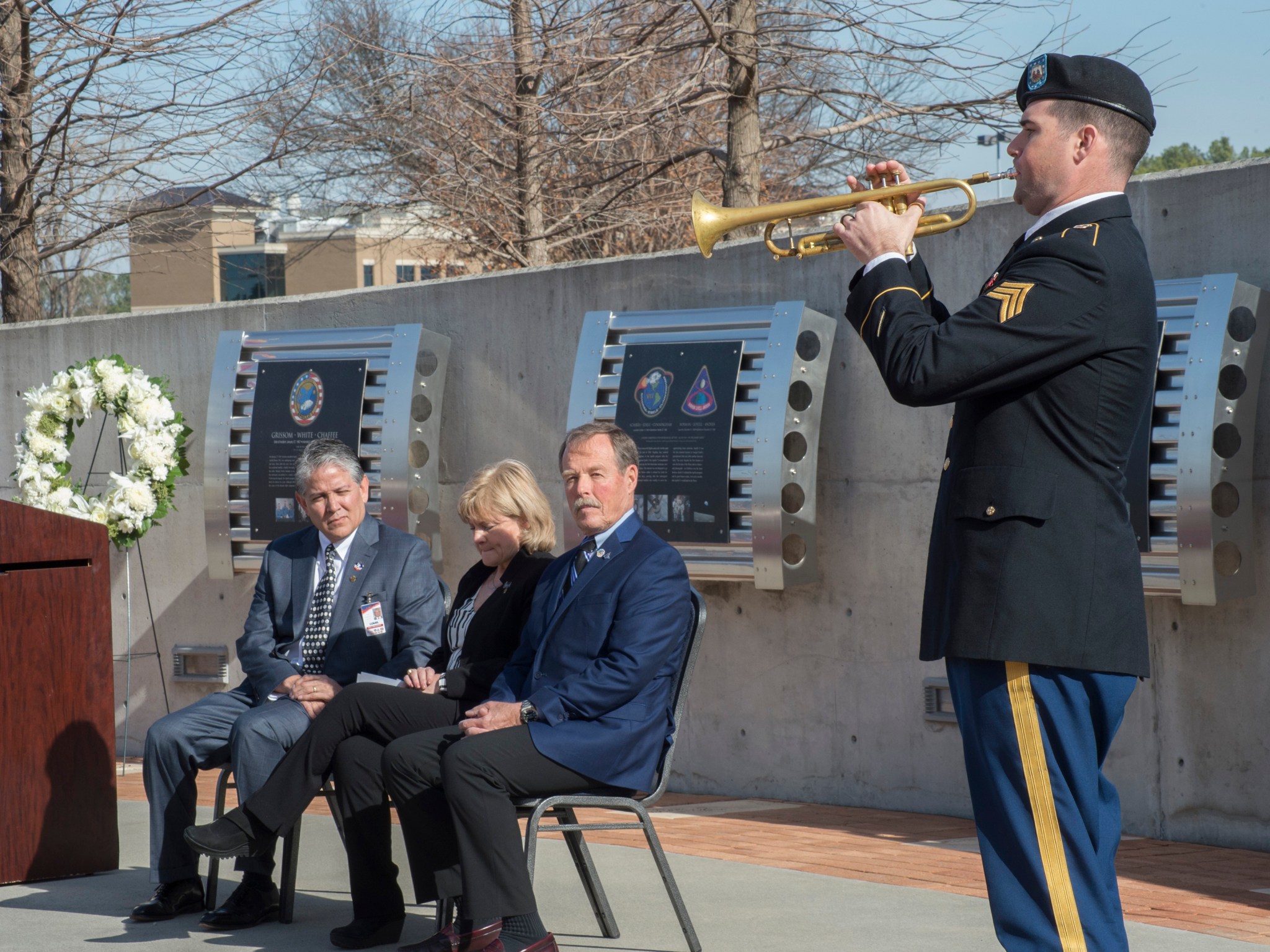
Sgt. James Old, right, of the U.S. Army Materiel Command Band’s Redstone Arsenal Brass Quintet, performs the introduction from James Horner’s “Apollo 13” film score at the U.S. Space & Rocket Center’s memorial event honoring NASA’s lost space heroes Jan. 31. From left, Louie Ramirez, chief financial officer for the Space & Rocket Center; Marshall Deputy Director Jody Singer; and former NASA astronaut Robert “Hoot” Gibson spoke at the event, which directly followed the Marshall ceremony and was held outside the museum and tourist center’s Davidson Center for Space Exploration. A video of the Army Materiel Command Band performing the Apollo 13″ music is available here. (NASA/MSFC/Emmett Given)
NASA Shares ‘Journey To Mars’ Experience During 2017 Super Bowl
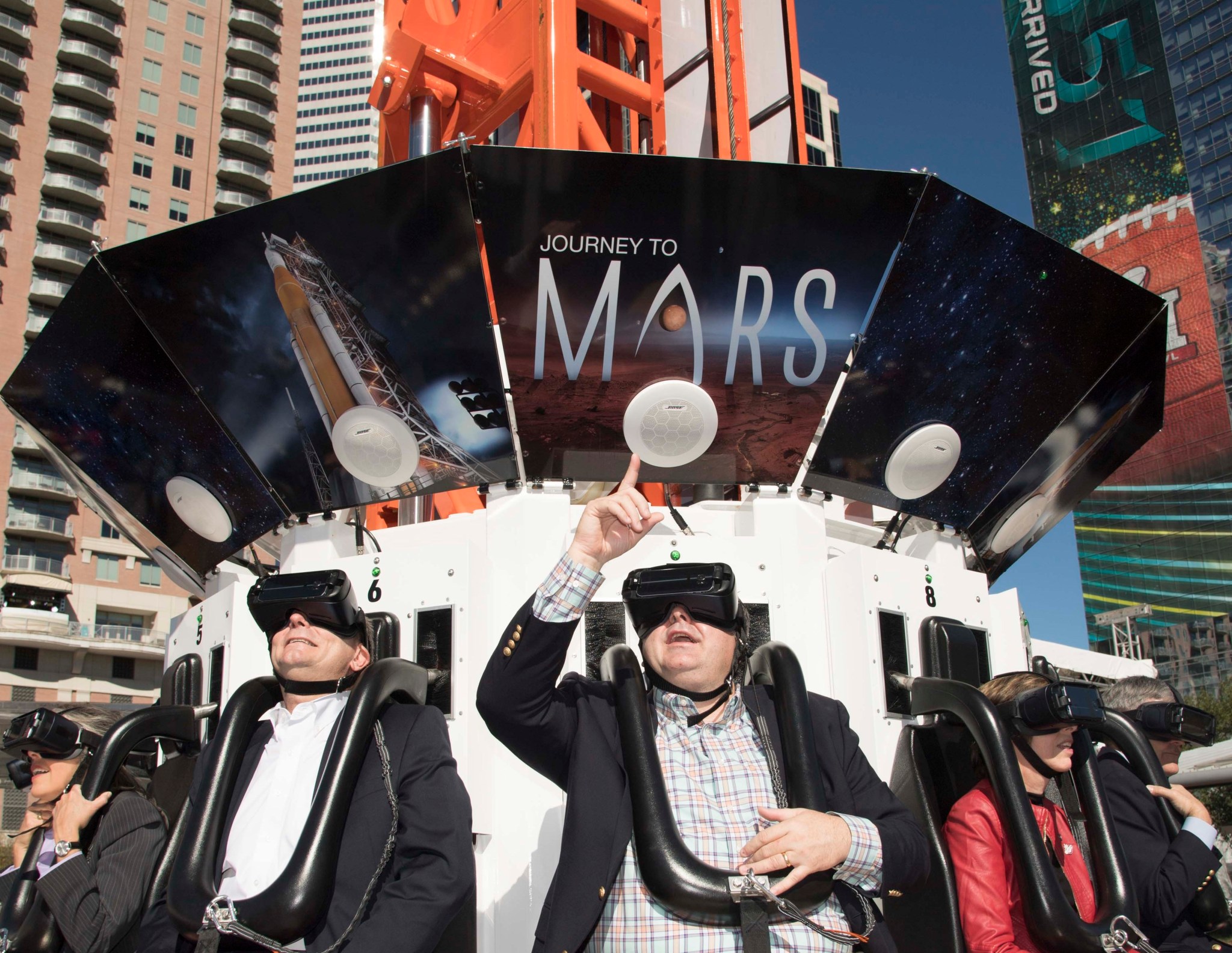
While supporting NASA media events during the 2017 Super Bowl LIVE fan festival in Houston, NASA Marshall Space Flight Center Director Todd May, center, takes a journey to Mars and returns to Earth, landing on the Super Bowl LI 50-yard-line in the virtual reality ride “Future Flight.” The one-of-a-kind digitally immersive experience showcases NASA’s Space Launch System and other real technologies being used and developed to send humans to Mars and beyond. Up to one million fans are expected to visit NASA’s space-themed fan experience area to enjoy the hands-on and space-related exhibits, which are open to the public in downtown Houston. (NASA)
U.S. Army Honors Marshall Metrology and Calibration Laboratory Team
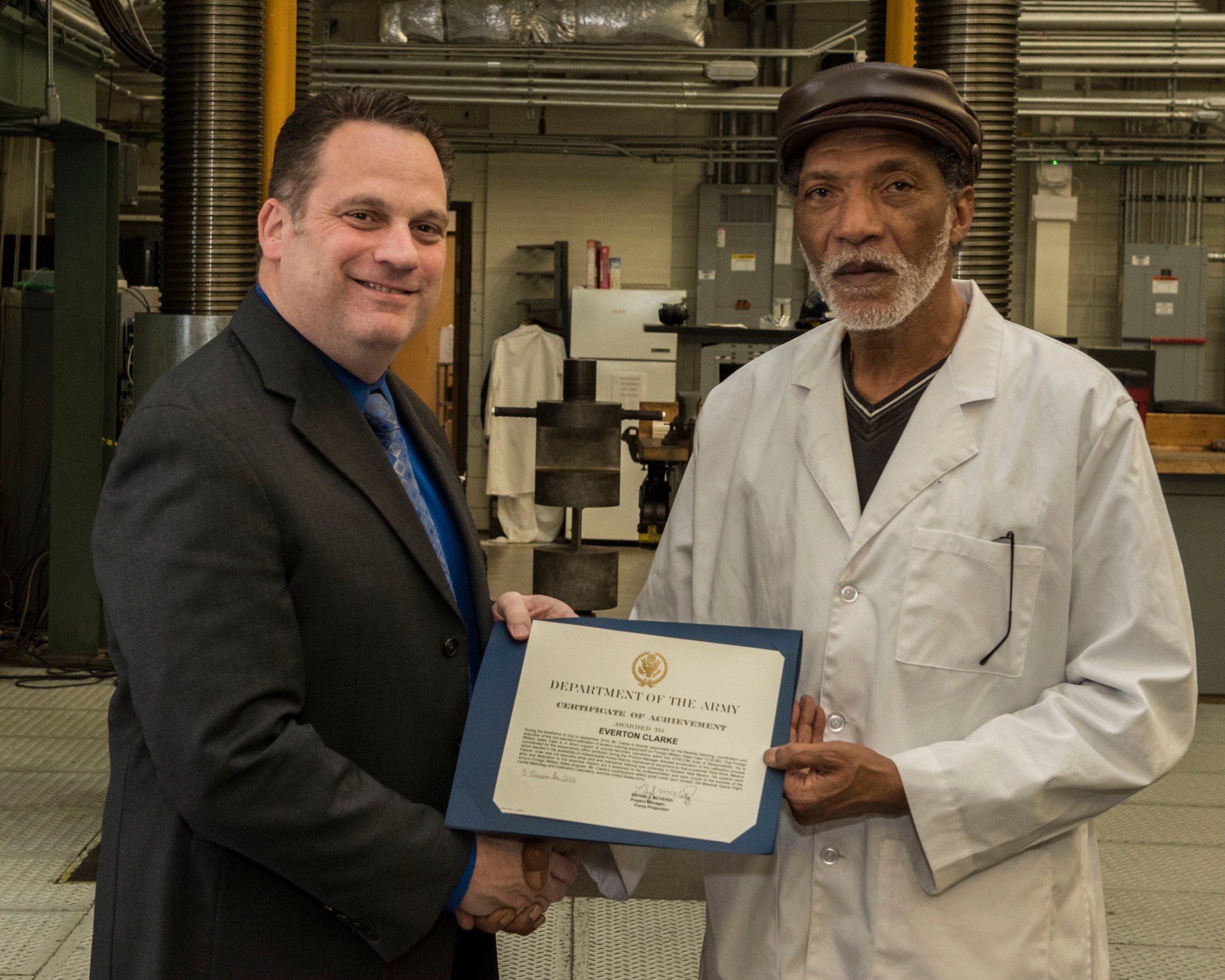
Metrology technician Everton Clarke, right, and 10 other Aerie Aerospace contractors supporting NASA Marshall Space Flight Center’s Metrology and Calibration Laboratory were honored by the U.S. Army Jan. 26. Steve Roberts, left, U.S. Army Force Projection deputy program manager, visited Marshall to present certificates of appreciation and commemorative coins to Lewis and his teammates, including Billy Clifton, Diane Coode, Josh Hyde, Carl Lewis, Tom Magruder, Cindy McCormick, Brandon Selvage, Jennifer Thomas, Tommy Young and laboratory manager Kirk Foster. Metrology is the scientific study of measurement, while calibration is the precise configuration of a tool, instrument or piece of hardware to accurately deliver results within a desired and predictable set of parameters. Situated in Building 4650 South, Marshall’s Metrology and Calibration Laboratory serves NASA, the military and other government and industry customers via some of the most sophisticated mechanical, electrical, pressure and force and flow equipment in the world. Its calibration hardware, addressing these and other disciplines in 15 focus areas, enables the Marshall team to perform more than 1,500 different calibration processes. The laboratory is managed by Marshall’s Engineering Directorate Test Laboratory. (NASA/MSFC/Fred Deaton)
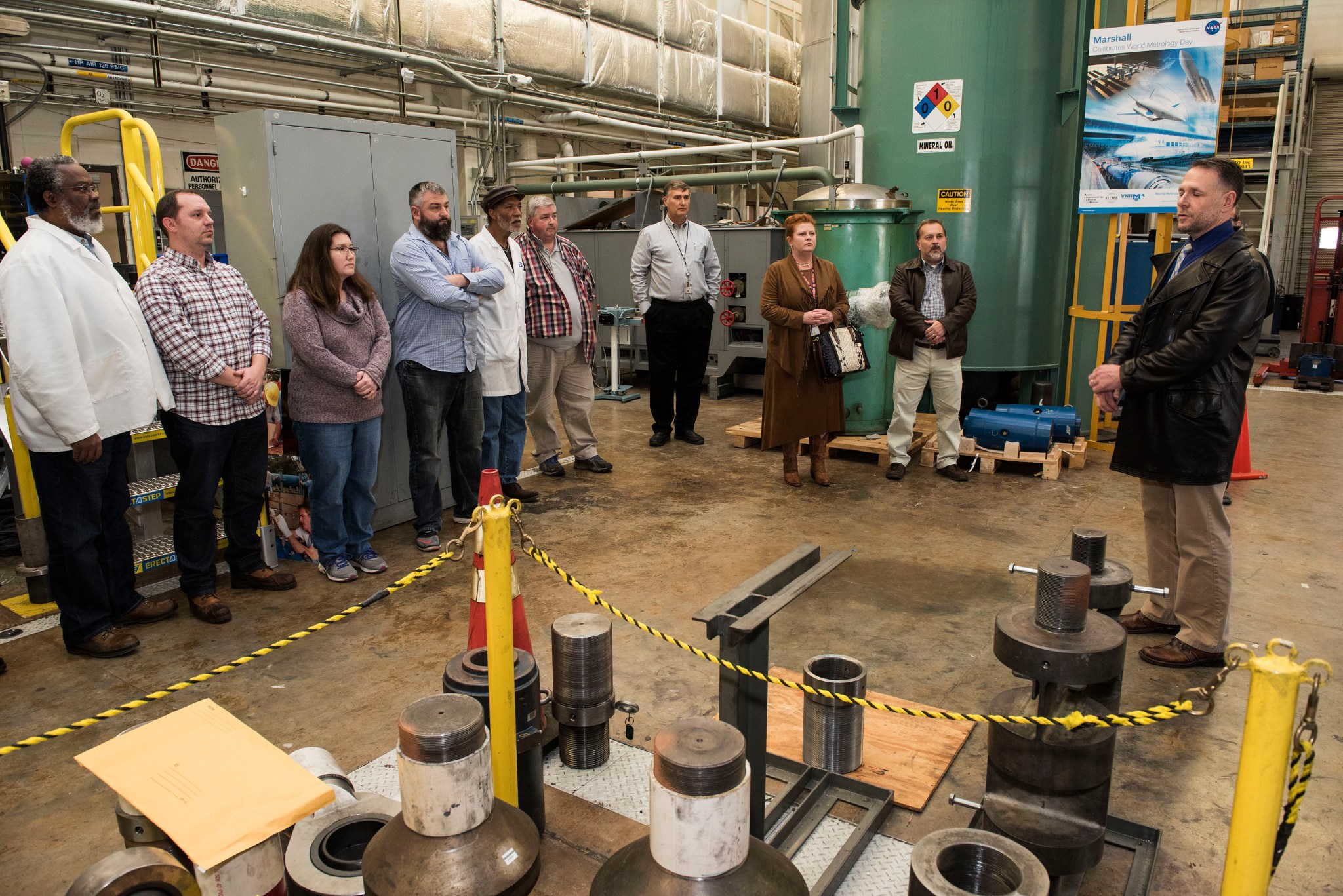
Tory Kessinger, right, international program manager for the U.S. Army Product Director Test, Measurement and Diagnostic Equipment Foreign Military Sales, addresses Marshall Metrology and Calibration Laboratory Program Manager Gary Kennedy, fourth from right, and laboratory personnel. Joining Force Projection deputy Program Manager Steve Roberts and Kessinger to recognize the Marshall team are Redstone Arsenal representatives Tina Bragg, third from right, of the Product Director TMDE Program Executive Office, Combat Support & Combat Service Support Army Force Projection, and Richard Hutson, second from right, of the Product Director TMDE Foreign Military Sales. The laboratory team at Marshall was recognized for their efforts, in August 2016, to calibrate 70 pieces of measurement and testing equipment used to support American military defense systems aiding the nation of Tunisia, a U.S. ally. Headquartered in Warren, Michigan, the Army’s Force Projection program is part of the Program Executive Office, Combat Support & Combat Service Support. The program develops, produces, fields and sustains hardware and materiel to meet current and future support requirements for all U.S. military operations. (NASA/MSFC/Fred Deaton)
This Week in NASA History: First Saturn I Block II Rocket Launches — Jan. 29, 1964
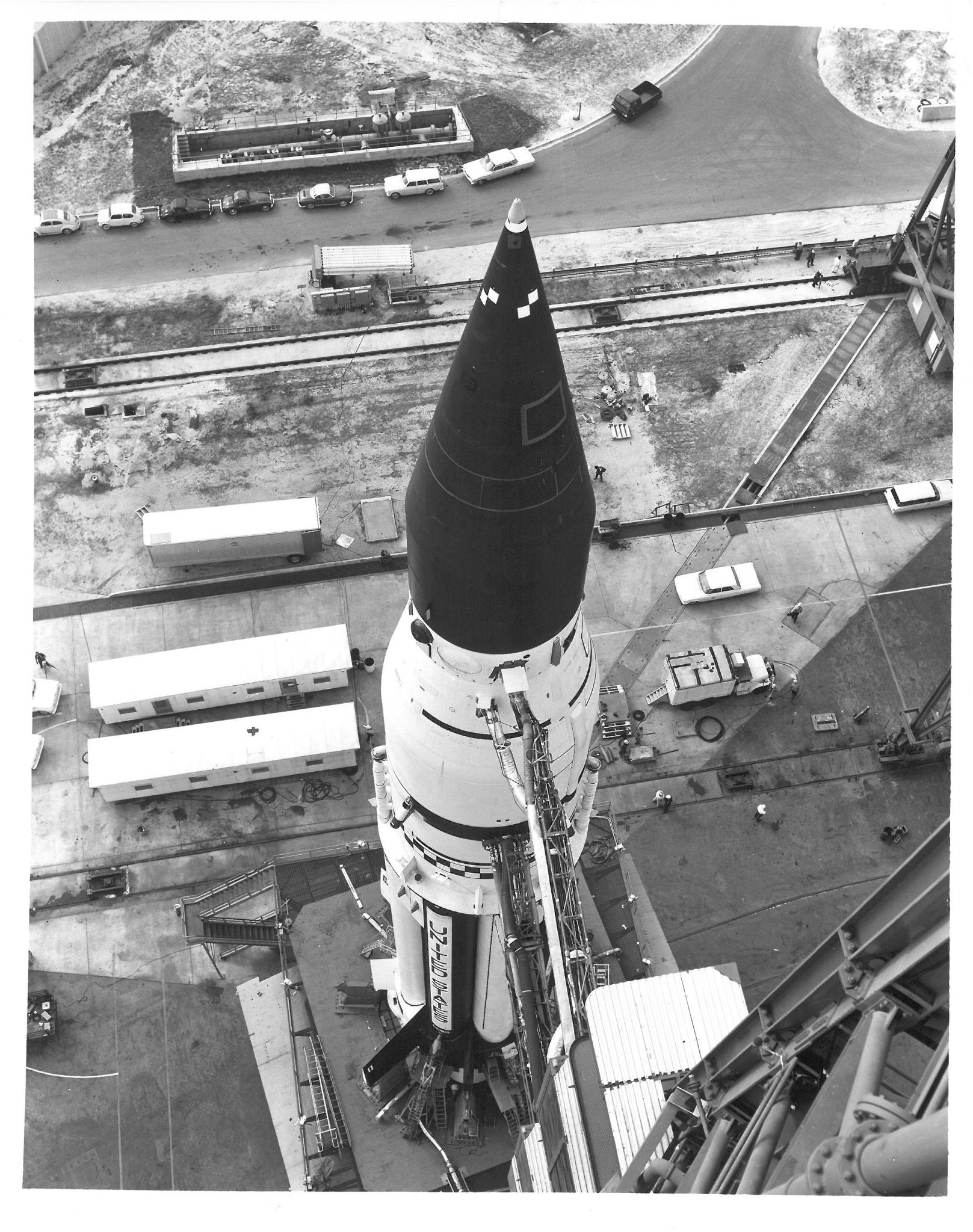
This week in 1964, SA-5, the fifth Saturn I launch vehicle launched from NASA’s Kennedy Space Center. SA-5 marked a number of firsts in the Saturn development program — which was managed by NASA’s Marshall Space Flight Center — including the first flight of a Saturn I Block II vehicle; the first flight of a live S-IV second stage with a cluster of six liquid hydrogen-fueled RL-10 engines, the first successful second stage separation and the first use of Launch Complex 37. The Saturn I launch vehicle was built at Marshall’s Fabrication and Assembly Engineering Division. Marshall also designed, developed and managed the production of the Saturn V rocket that took astronauts to the moon. Today, Marshall is developing NASA’s Space Launch System, the most powerful rocket ever built that will be capable of sending astronauts deeper into space than ever before, including to an asteroid and Mars. The NASA History Program is responsible for generating, disseminating, and preserving NASA’s remarkable history and providing a comprehensive understanding of the institutional, cultural, social, political, economic, technological, and scientific aspects of NASA’s activities in aeronautics and space. For more pictures like this one and to connect to NASA’s history, visit the Marshall History Program’s webpage. (NASA)
Obituaries
Robert W. Hughes, 73, of Huntsville, died Jan. 28. He retired from the Marshall Center in 2004 as an aerospace engineer. He is survived by his wife, Pamela Hughes.



























